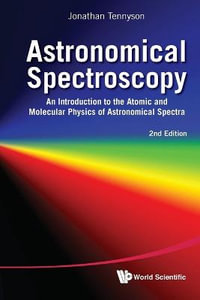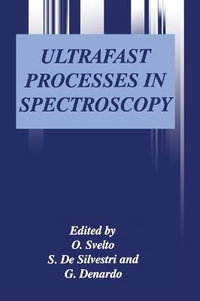Section 1 The Basic Tools of Quantum Mechanics
1: Quantum Mechanics describes matter in terms of wavefunctions and energy levels. Physical measurements are described in terms of operators acting on wavefunctions.
I: Operators, Wavefunctions, and the Schrodinger Equation
II: Examples of Solving the Schrodinger Equation
III: The Physical Relevance of Wavefunctions, Operators, and Eigenvalues
2: Approximation methods can be used when exact solutions to the Schrodinger equation can not be found.
I: The Variational Method
II: Perturbation Theory
III: Example Applications of Variational and Perturbation Methods
3: The Application of the Schrodinger equation to the motions of electrons and nuclei in a molecule lead to the chemists' picture of electronic energy surfaces on which vibration and rotation occurs and among which transitions take place.
I: The Born-Oppenheimer Separation of Electronic and Nuclear Motions
II: Rotation and Vibration of Diatomic Molecules
III: Rotation of Polyatomic Molecules
IV: Summary
Summary
Section 1 Exercises and Problems and Solutions
Section 2 Simple Molecular Orbital Theory
4: Valence atomic orbitals on neighboring atoms combine to form bonding, non-bonding, and antibonding molecular orbitals.
I: Atomic Orbitals
II: Molecular Orbitals
5: Molecular orbitals possess specific topology, symmetry, and energy-level patterns.
I: Orbital Interaction Topology
II: Orbital Symmetry
6: Along "reaction paths", orbitals can be connected one-to-one according to their symmetries and energies. This is the origin of the Woodward-Hoffman rules.
I: Reduction in Symmetry Along Reaction Paths
II: Orbital Correlation Diagrams - Origins of the Woodward-Hoffman Rules
7: The most elementary molecular orbital models contain symmetry, nodal pattern, and approximate energy information.
I: The LCAO-MO Expansion and the Orbital-Level Schrodinger Equation
II: Determining the Effective Potential V
Section 2 Exercises and Problems and Solutions
Section 3 Electronic Configurations, Term Symbols, and States
8: Electrons are placed into orbital to form configurations, each of which can be labeled by its symmetry. The configurations may "interact" strongly if they have similar energies. The mean-field model, which forms the basis of chemists' pictures of electronic structure of molecules, is not very accurate.
I: Orbitals Do Not Provide the Complete Picture; Their Occupancy by the N-Electrons Must Be Specified
II: Even N-Electron Configurations Are Not Mother Nature's True Energy States
III: Mean-Field Model
IV: Configuration Interaction (CI) Describes the Correct Electronic States
9: Electronic wavefunctions must be constructed to have permutational antisymmetry because the N-electrons are indistinguishable Fermions.
I: Electronic Configurations
II: Antisymmetric Wavefunctions
10: Electronic wavefunctions must also possess proper symmetry. These include angular momoentum and point group symmetries.
I: Angular Momentum Symmetry and Strategies for Angular Momentum Coupling
II: Atomic Term Symbols and Wavefunctions
III: Linear Molecule Term Symbols and Wavefunctions
IV: Non-linear Molecule Term Symbols and Wavefunctions
V: Summary
11: One must be able to evaluate the matrix elements among properly symmetry adapted N-electron configuration functions for any operator, the electronic Hamiltonian in particular. The Slater-Condon rules provide this capability.
I: CSF's Are Used to Express the Full N-Electron Wavefunction
II: The Slater-Condon Rules Give Expressions for the Operator Matrix Elements Among the CSF's
III: Examples of Applying the Slater-Condon Rules
IV: Summary
12: Along "reaction paths", configurations can be connected one-to-one according to their symmetries and energies. This is another part of the Woodward-Hoffmann rules.
I: Concepts of Configuration and State Energies
II: Mixing of Covalent and Ionic Configurations
III: Various Types of Configuration Mixing
Section 3 Exercises and Problems and Solutions
Section 4 Molecular Rotation and Vibration
13: Treating the full internal nuclear-motion dynamics of a polymatomic molecule is complicated. It is conventional to examine the rotational movement of a hypothetical "rigid" molecule as well as the vibrational motion of a non-rotating molecule, and to then treat the rotation-vibration couplings using perturbation theory.
I: Rotational Motions of Rigid Molecules
II: Vibrational Motion Within the Harmonic Approximation
III: Anharmonicity
Section 5 Time Dependent Processes
14: The interaction of a molecular species with electromagnetic fields can cause transitions to occur among the available molecular energy levels (electronic, vibrational, rotational, and nuclear spin). Collisions among molecular species likewise can cause transitions to occur. Time-dependent perturbation theory and the methods of molecular dynamics can be employed to treat such transitions.
I: The Perturbation Describing Interactions with Electromagnetic Radiation
II: Time-Dependent Perturbation Theory
III: The Kinetics of Photon Absorption and Emission
15: The tools of time-dependent perturbation theory can be applied to transitions among electronic, vibrational, and rotational states of molecules.
I: Rotational Transitions
II: Vibration-Rotation Transitions
III: Electronic-Vibration-Rotation Transitions
IV: Time Correlation Function Expressions for Transition Rates
16: Collisions among molecules can also be viewed as a problem in time-dependent quantum mechanics. The perturbation is the "interaction potential", and the time dependence arises from the movement of the nuclear positions.
I: One Dimensional Scattering
II: Multichannel Problems
III: Classical Treatment of Nuclear Motion
IV: Wavepackets
Section 6More Quantitative Aspects of Electronic Structure Calculations
17: Electrons interact via pairwise Coulomb forces; within the "orbital picture" these interactions are modelled by less difficult to treat "averaged" potentials. The difference between the true Coulombic interactions and the averaged potential is not small, so to achieve reasonable (ca. 1 kcal/mol) chemical accuracy, high-order corrections to the orbital picture are needed.
I: Orbitals, Configurations, and the Mean-Field Potential
II: Electron Correlation Requires Moving Beyond a Mean-Field Model
III: Moving from Qualitative to Quantitative Models
IV: Atomic Units
18: The Single Slater determinant wavefunction (properly spin and symmetry adapted) is the starting point of the most common mean-field potential. It is also the origin of the molecular orbital concept.
I: Optimization of the Energy for a Multiconfiguration Wavefunction
II: The Single Determinant Wavefunction
III: The Unrestricted Hartree-Fock Spin Impurity Problem
IV: The LCAO-MO Expansion
V: Atomic Orbital Basis Sets
VI: The Roothaan Matrix SCF Process
VII: Observations on Orbitals and Orbital Energies
19: Corrections to the mean-field model are needed to describe the instantaneous Coulombic interactions among the electrons. This is achieved by including more than one Slater determinant in the wavefunction.
I: Different Methods
II: Strengths and Weaknesses of Various Models
III: Further Details on Implementing Multiconfigurational Methods
20: Many physical properties of a molecule can be calculated as expectation values of a corresponding quantum mechanical operator. The evaluation of other properties can be formulated in terms of the "response" (i.e., derivative) of the electronic energy with respect to the application of an external field perturbation.
I: Calculations of Properties Other Than the Energy
II: Ab Initio, Semi-Empirical, and Empirical Force Fields
Section 6 Exercises and Problems and Solutions
Useful Information and Data
Appendices
Mathematics Review A
The Hydrogen Atom Orbitals B
Quantum Mechanical Operators and Commutation C
Time Independent Perturbation Theory D
Point Group Symmetry E
Qualitative Orbital Picture and Semi-Empirical Methods
Angular Momentum Operator Identities G
























